The True Story Behind The Pursuit of Love is Darker Than It Seems
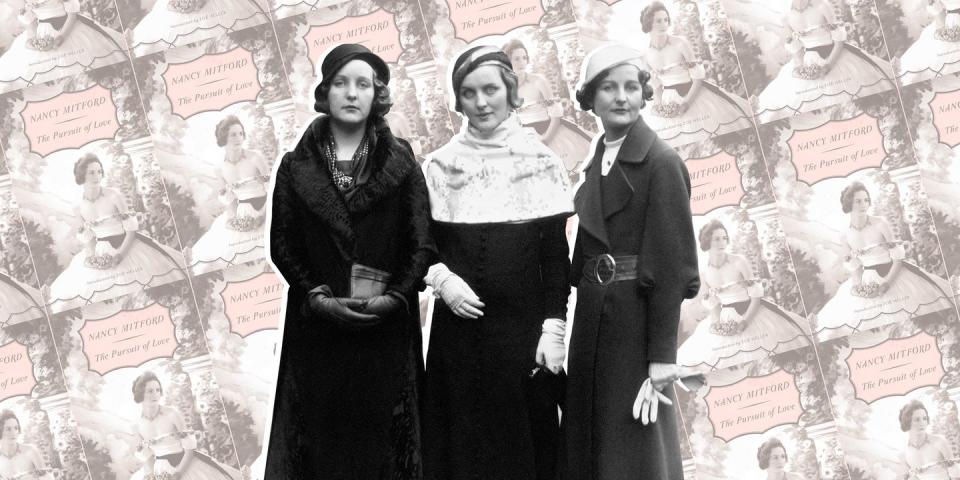
“Hearst Magazines and Verizon Media may earn commission or revenue on some items through the links below.”
“How I shrieked,” Jessica Mitford once said of reading her older sister Nancy’s now-classic book The Pursuit of Love. Those shrieks weren’t exactly gleeful. With the novel, Nancy had pulled off a seemingly impossible feat: she’d fictionalized her complicated, calamitous family—with all its Fascist fervor and Nazi ties—and turned them into charmingly eccentric toffs. “There we were, larger than life,” Jessica said, “Mitfords renamed Radletts.”
During the 1930s and '40s, the brood—six sisters and a lone brother, Tom— provided relentless headlines and commanded both admiration and virulent hatred. Today, nearly a century later, Mitford biographies hit bestseller lists; the sisters’ lives are endlessly parsed in articles and documentaries; stories based on them are regularly dramatized. Case in point: The Pursuit of Love, a semi-autobiographical novel by Nancy Mitford, has been made into three separate series over the years, including the just-released BBC/Amazon series adapted and directed by Emily Mortimer and starring Lily James and Dominic West. The global appetite for stories about the goings-on and misdeeds of the British elite appears to be limitless.
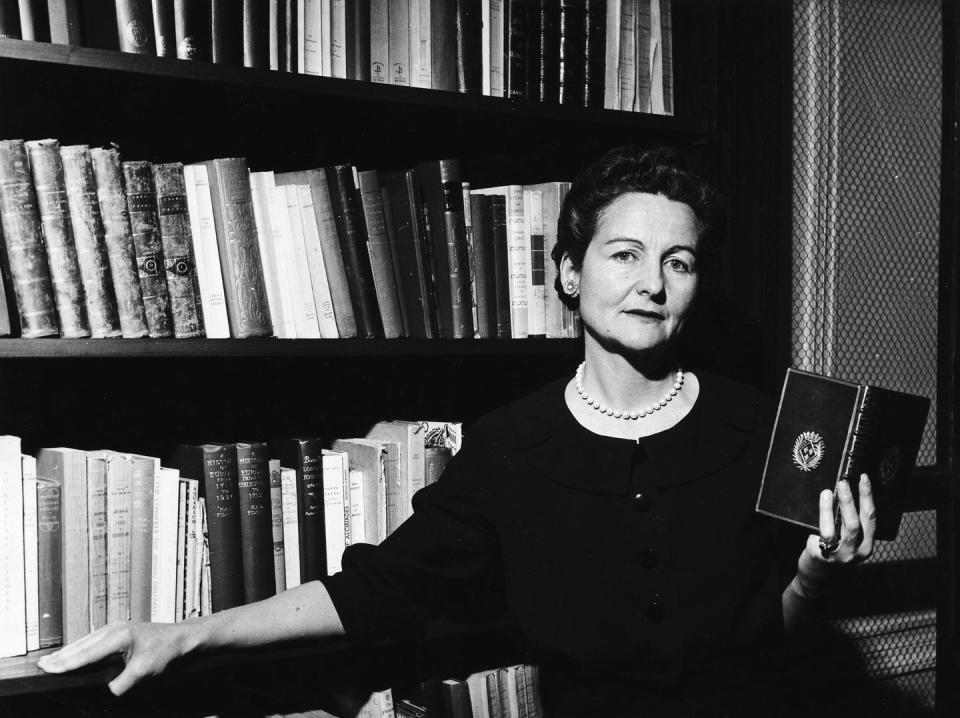
Yet the Mitfords were not your average passel of colonial-era, estate-dwelling aristocrats: their extreme politics and romantic proximity to Fascist leaders set them apart, to put it mildly. The family likely would have remained forever-pariahs, if not for Nancy, who, in novel after novel, romanticized even the most contentious members of her clam and made them commercially viable. The Pursuit of Love was the most successful of these rebranding efforts: the novel centers on the romantic misadventures of a teenage English aristocratic, languishing away in a country mansion until she makes her way into the world, one ill-fated marriage after another. In the book, Nancy romanticized the Mitfords’ childhood hunts, habitats, and debutante balls, and Jessica later stated that the Pursuit characters were “almost entirely drawn from life.”
While some childhood details may have been drawn from life, Jessica failed to mention how much of the family’s more sordid history had been left out of Nancy’s pages. Millions of people have read and watched Pursuit without knowing the full history behind the story. Yet not only is the Mitfords’ history more engrossing than the fictional characters based on them, it has become eerily relevant in our own era of rising political extremism and houses divided.
What went down in the Mitford house reflected the rising political movements then consuming 1930s Europe, with Fascism engulfing Spain and Italy, Nazism rising in Germany, and Communism firmly entrenched in the Soviet Union. Several of the Mitford sisters picked their favorite “–ism” and then ran wild with it.
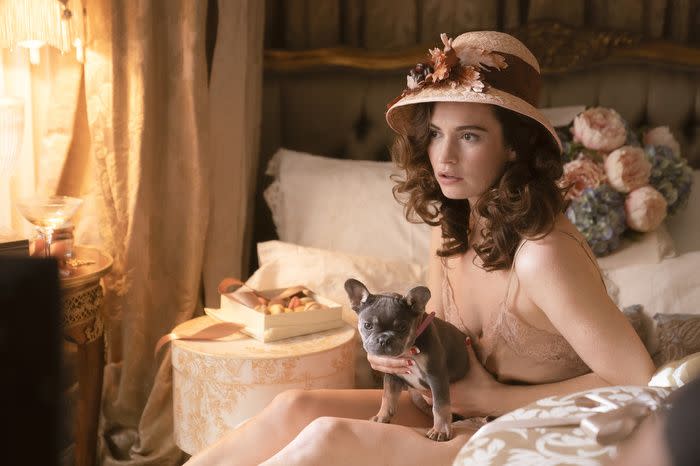
Six years Nancy’s junior, onetime society queen Diana Mitford jilted her Guinness-heir husband and their children for Oswald Mosley, founder of the British Union of Fascists. Then Unity Mitford became a fanatical Nazi. While many other British aristocrats of the day contented themselves with admiring Hitler from across the Channel, Unity dispatched herself to Germany to stalk Hitler and became something of a mistress to him. She was “The Fuhrer’s muse,” and a British newsmagazine story once scornfully called her “Nazi-Lover The Hon. Unity Freeman-Mitford.” Journalists speculated that she might marry Hitler—an event that, to her chagrin, didn’t happen.
As if this right-wing sororal duo wasn’t enough of a gift to Fleet Street, Jessica—the second youngest daughter—absconded to Spain to fight fascists with her left-wing activist cousin, married him while abroad, declared herself a Communist, and never returned home.
Along with newspaper editors around the globe, Nancy saw opportunity in her family’s ability to command the attention of the masses. Her whimsification of the Mitfords began in the early 1930s, with her novels Highland Fling, Christmas Pudding, and Wigs on the Green. These junior varsity portraits of the family were all prewar releases, yet The Pursuit of Love—Nancy’s deepest romanticization of the family—was written toward the end of WWII, when Unity and Diana were already widely loathed in their home country.
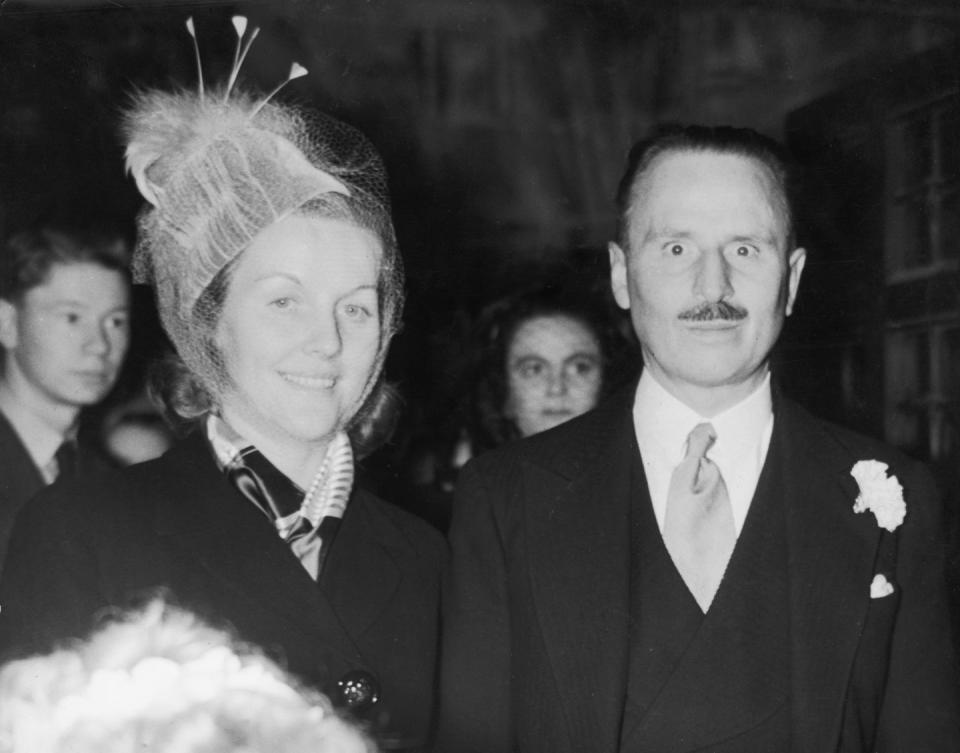
Nearly all of the most headline-grabbing Mitfords were given a makeover in Pursuit. Just a few years earlier, the girls’ father, Lord Redesdale was making pro-Nazi speeches that “could have been written by Goebbels himself,” as one biographer put it. Repurposed as the benevolently xenophobic, sexist, and racist Uncle Matthew in Pursuit (played by Dominic West in the new Netflix series), Lord Redesdale was suddenly a recast as an unhinged but lovable eccentric. Lady Redesdale, a publicity-seeking anti-vaxxer and Hitler enthusiast, got a sympathetic makeover as the chicly nonchalant Aunt Sadie.
For Pursuit’s protagonist Linda (played by Lily James in the new series), Nancy created a composite character; Diana’s and Jessica’s real-life romantic dramas proved most useful in driving the plot. Linda is a sheltered, frivolous, and innocuous aristo-fool. Like Diana, she abandons a hyper-wealthy heir husband for a man of politics, although instead of marrying an aspiring Fascist demagogue, Linda chooses a grim, humorless Communist do-gooder. (Nancy had not liked Jessica’s actual leftist activist husband, Esmond Romilly, calling him “the most horrible human being I have ever met,” but he was admittedly good copy.)
Some biographical details that Nancy chose not to incorporate into Linda’s story: Diana’s wedding to Mosley in the Goebbels’ living room (Hitler was guest of honor and gave the couple a signed photo of himself as a wedding present); nor did she include Diana’s and Mosley’s years-long imprisonment during the war for being possible national security threats. Coverage of Diana’s incarceration in the squalid Holloway prison had been explosive and gleeful: Lady Mosley Arrested at Last!, blared one banner headline. Riders on a bus driven regularly past Holloway were happily invited by the driver to behold “Lady Mosley’s suite.”
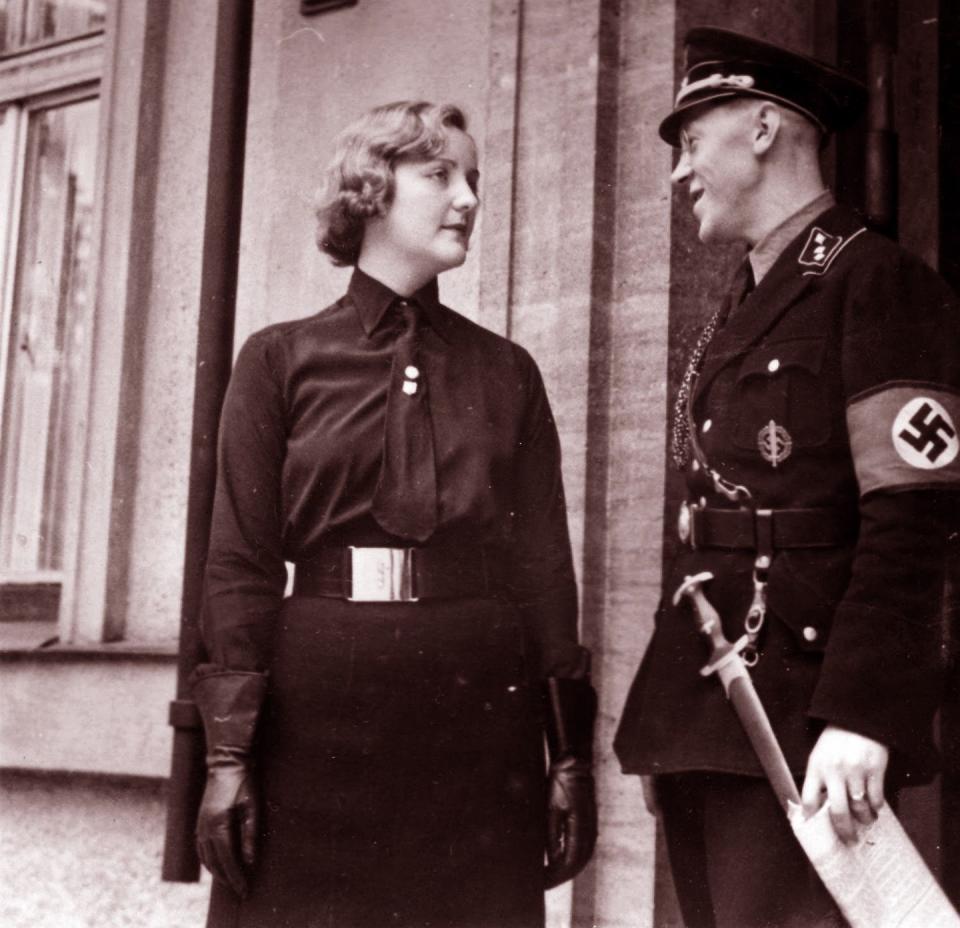
Nancy also largely decided to leave Unity out of Pursuit, although tidbit traits—such as Unity’s affection for shock-value pets, like rats and snakes—make an appearance. But then again, Nancy had already gotten literary utility from Unity in her 1935 novel, Wigs on the Green, where Unity, transformed into Eugenia, a ridiculous “Union Jackshirt” supporter, is played for laughs. In Wigs, Unity-as-Eugenia is shown standing on an upside-down washtub, absurdly preaching fascist doctrine to bewildered villagers, wearing a belted dagger, flanked by a nanny, and taken seriously by no one. But no one was laughing in real life when Unity procured a gun to practice “shooting Jews”; nor when she took up residence in a luxurious Munich apartment stolen from Jewish owners whose fate remains unknown. When war officially broke out between England and Germany, she shot herself in the head. None of this made great drawing-room comedy material.
It would be hard to overstate the prewar and wartime vitriol inspired by Unity and Diana, which makes the reception of The Pursuit of Love all the more unlikely. Released in December 1945, just months after the conclusion of the deadliest conflict in human history, this highly selective and sanitized portrait of the Mitfords-cum-Radletts was “an instant success, selling in huge numbers,” recalls Diana’s daughter-in-law, journalist Charlotte Mosley. It was also, she adds, practically the “first time the name ‘Mitford’ appeared in the press unattached to scandal.”
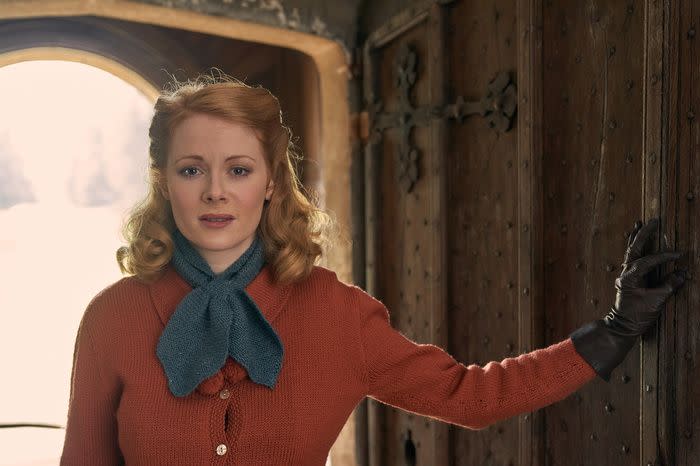
A new Mitford mythology was established instantaneously; the wartime toxicity seemed to evaporate; the torrid family history had somehow, bizarrely but successfully, been repackaged as high society rom-com material. As Mitford biographer Laura Thompson put it, “the book would do more than any public recantations could ever have done to remove the taint upon the family name.” Pursuit sold more than a million copies before Nancy died in 1973, and it made her rich.
Charlotte Mosley later wrote that Nancy’s “way of dealing with life was to treat everything, on the surface at least, as a huge joke.” Yet there is evidence that she was uneasy that her novels had helped whitewash and downplay horrific history. When approached by her publisher in 1951 to reissue Wigs on the Green, Nancy refused. “Too much has happened,” she said, “for jokes about Nazis to be regarded as funny or as anything but the worst of taste, so that is out.”
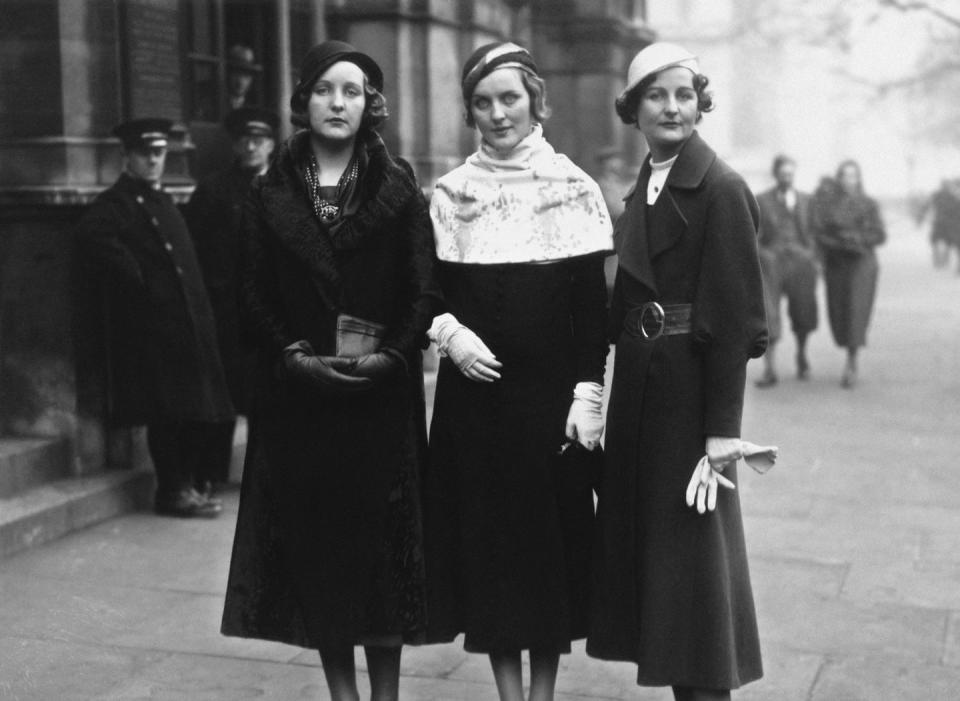
It's also ironic that Nancy ended up playing the role of Family Redeemer, as she had, in 1940, personally denounced Diana to the British government as “a far more dangerous character” than Oswald Mosley himself. When Diana was released from prison to house arrest in 1943, Nancy had protested through official channels, reminding government officials that Diana was “wildly ambitious … ruthless … a devoted Fascist and admirer of Hitler.” To their mother, Nancy had pledged that she would “join hands with the devil himself to stop any further extension of the disease [of Fascism].”
Yet she was ecstatic over the success of The Pursuit of Love, which helped ensure that the defanged-and-glamorized Mitford brand would live in posterity. By the time Emily Mortimer was introduced to the book in the 1970s, she says, the real-life events and people that had selectively inspired Pursuit just felt like distant history.
“In England, there’s a lot of noise and associations with the Mitfords,” Mortimer says. “I feel that the book anyway transcends all that; it stands on its own. It is itself a satire and comment on the 20th century and culture between the wars.”
Many viewers may indeed see Pursuit as some good, standalone Stately Homes of England voyeurism. Yet there remains a moral imperative to remember the fraught history behind those figures reinvented and preserved in amber by Nancy’s work—especially now that those historical figures are, once again, morbidly relatable.
You Might Also Like

